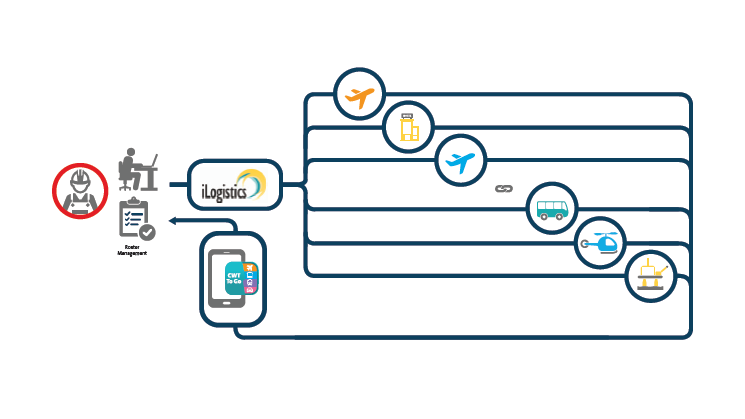How to Lower Travel Costs

By Peter Brady, Vice President, Asia Pacific and Global Products, CWT Energy Resources and Marine
Amidst prolonged uncertainty in global markets and volatile oil prices, companies in the energy, resources and marine sectors are increasingly looking for ways to reduce costs. Despite significant spending cuts, travel remains a key function for these companies to maintain their operations at rigs, fields or mines, which still have to be serviced by crews year round. There is, however, a way to potentially make travel processes considerably more efficient and therefore reduce costs, which many companies in these sectors have not yet explored.
The general idea is fairly simple – organizations should leverage technology to streamline their logistics and corporate travel arrangements and manage them as a single process. Doing so can help an organization cut their travel spend by up to 15 percent and reduce overall travel arrangement times by up to 75 percent.
Beyond savings, streamlining logistics and corporate travel also presents many other potential benefits for companies—from making bookings more efficient, simplifying internal and external reporting, increasing traveler compliance and safety, and improving the ability to handle last minute travel requests and changes.
Achieving this, however, requires a good understanding of how travel in these sectors works.
Managing trips for rotating workforces is complex
The nuances of managing staff and contractor travel in the energy, resources and marine industries has always been a very complex process. It comprises commercial travel arrangements (for example, a flight between Delhi and Mumbai) and logistics (for example, charter fixed wing or helo flights, and site accommodation). The distinct processes involved in arranging logistics and commercial travel often results in organizations keeping separate in-house travel desks. This can make the overall travel experience inefficient, challenging and troublesome not just for operators and booking agents, but also for passengers.
The illustration below summarizes the current state of affairs in the energy, resources and marine worlds, with multiple touch points taking care of different booking needs.
.png)
Furthermore, these processes are frequently managed through manual spreadsheets, and the changing nature of the offshore business makes it even harder for companies to accommodate last minute travel requests or changes. Often times, companies and their passengers have been left with very few choices, considering the constant changes in plans and itineraries that these sectors are known for.
The cost of maintaining multiple travel desks and the safety risks caused due to passengers making non-compliant travel decisions make this problem more challenging. In some cases, the communication gap that exists between the logistics and commercial travel worlds can compel companies to take decisions that may increase the cost of their overall operations.
.png)
Moving to a streamlined approach
Untangling the web of the various logistics and commercial travel arrangements to create a streamlined process may appear a daunting task, but can be achieved through a systematic and organized approach, yielding strong results.
As a starting point, it is important to have a good understanding of the process required to get a worker from home to site and the impact that a single change to this process can have up or down stream. Things to consider are internal processes such as: who is creating the bookings, how the bookings are being made, approval processes, change requests and lead booking times. Are these processes that can be changed?
The next thing to look at is booking best practices throughout the organization. Are all rig or travel managers following the same process when coordinating and sending travel requests to the travel desk? If not, why? Are line managers consistent with approvals and confirming change requests for workers on and off site?
Capturing data is key, and the best way to do this is through one data source. This is where technology comes in. Instead of having multiple touch points taking care of different booking needs, all bookings can be channeled through a single automated travel and logistics management system. Minimizing systems and complexities whilst providing an efficient booking process can help ensure consistency in data used for financial reporting, workforce management and optimization, traveler tracking and duty of care.
And instead of travelers receiving multiple itineraries for commercial flights, hotel bookings, helicopter transfers to the rig, and every other segment of their journey, they can receive a single consolidated itinerary on a mobile app.
The opinions expressed herein are the author's and not necessarily those of The Maritime Executive.
